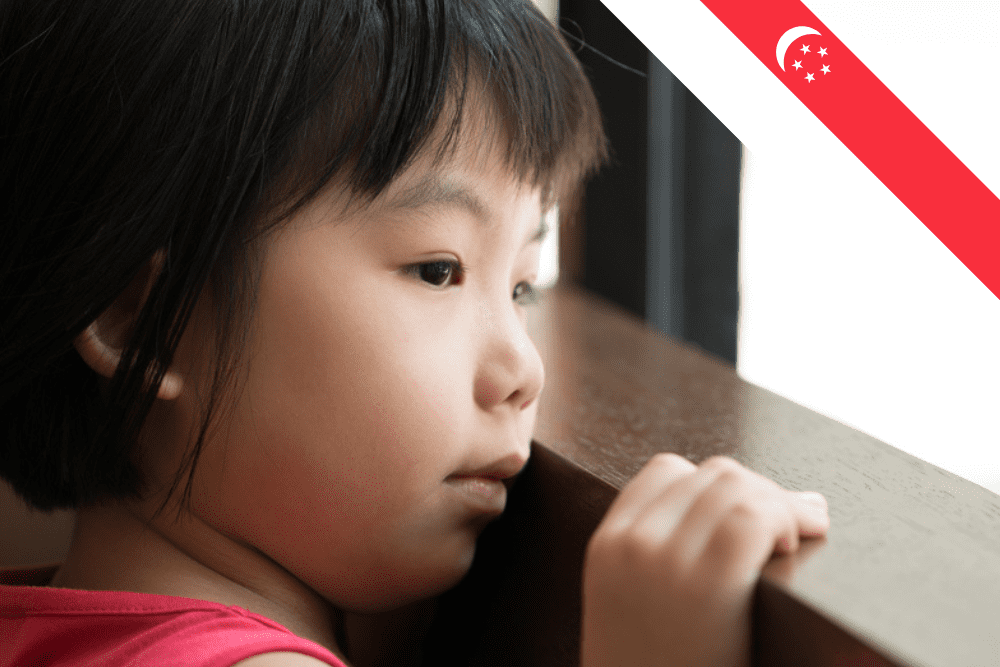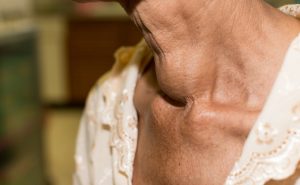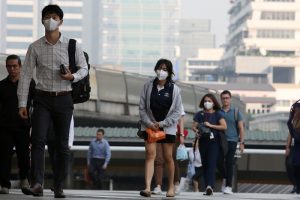How to Report Child Abuse in Singapore
A recent case in Singapore, where a 15-year-old girl lived in a cramped hawker stall for 11 months, highlights the urgency of recognising and reporting child abuse. Neighbours noticed her reclusive behaviour, poor hygiene, and inadequate living conditions, which indicated severe neglect. Recognising such signs of distress in children is crucial for timely intervention.
Immediate Actions to Take
When encountering a child in distress, immediate action is crucial. In the case of the girl living in the hawker stall, authorities were alerted during routine checks. If you find a child in a similar situation, contact the police or child protection services immediately. Providing temporary shelter, food, or clothing can also be vital in such emergencies.
-
- Contact Authorities: Immediately contact the police at 999 if the child is in immediate danger. Alternatively, you can reach the Ministry of Social and Family Development’s (MSF) Child Protective Service at 1800-777-0000 for non-urgent cases (MSFD) (The Children’s Society).
- Provide Immediate Assistance: Ensure the child has necessities such as food, water, and clothing. Offer temporary shelter if possible while waiting for authorities to arrive.
- Gather Information: Try to gather as much information as possible about the child’s situation, including their name, age, and any visible signs of distress. This information will be helpful for authorities in their investigation.
- Stay with the Child: Stay with the child until help arrives to ensure their safety and provide comfort during this distressing time.
Recognising the Signs of Child Abuse
Child abuse can be subtle and not always immediately apparent. Signs of abuse can be physical, emotional, or behavioural, and they vary depending on the type of abuse.
Physical Signs
- Unexplained Injuries: Bruises, burns, or fractures that do not have a clear explanation.
- Frequent Absences from School: Repeated injuries or illnesses that result in frequent absences from school.
- Fear of Going Home: Children who seem anxious about going home or show fear when it’s time to leave school.
Emotional Signs
- Extreme Behaviour: Excessive withdrawal, fearfulness, or aggression that is not typical for the child’s age.
- Delayed Emotional Development: Lack of emotional responsiveness or attachment issues.
- Low Self-Esteem: Constantly feeling worthless, unloved, or showing signs of depression and anxiety.
Behavioural Signs
- Sudden Changes in Behaviour: Drastic changes in behaviour or performance in school.
- Overly Compliant: Too eager to please or obey adults, possibly due to fear of punishment.
- Inappropriate Sexual Behaviour: Knowledge or behaviour that is not age-appropriate.
Recognising these signs is the first step in protecting children from further harm. If you notice any of these signs, it is important to report your concerns to the appropriate authorities immediately.
Understanding and Reporting Neglect
Neglect is a form of child abuse that occurs when a caregiver fails to provide adequate care, supervision, or essential needs. It can be just as harmful as physical or emotional abuse. Recognising the signs of neglect is crucial for timely intervention.
Signs of Neglect
- Poor Hygiene: Consistently dirty appearance, severe body odour, or untreated illnesses and injuries.
- Inappropriate Clothing: Wearing clothes that are dirty, ill-fitting, or unsuitable for the weather.
- Malnutrition: Noticeable weight loss, constant hunger, or hoarding food.
- Frequent Absences from School: Regularly missing school without a valid reason, or consistently being late.
- Lack of Supervision: Being left alone for long periods, or being left in the care of unsuitable guardians.
- Unattended Physical or Medical Needs: Unmet medical, dental, or psychological needs.
In the case of the girl living in the hawker stall, neighbours observed her poor hygiene and inadequate living conditions. These are clear indicators of neglect that necessitate immediate reporting and intervention.
How to Report Child Abuse in Singapore
Reporting child abuse in Singapore is a crucial step in ensuring the safety and well-being of the child. Here’s a comprehensive guide on how to do it:
Immediate Steps to Take
Call the Authorities:
- For immediate danger, contact the police at 999.
- For non-urgent cases, reach out to the Ministry of Social and Family Development’s (MSF) National Anti-Violence and Sexual Harassment Helpline at 1800-777-0000, or make an online report.
Provide Detailed Information:
- When making a report, provide as much detail as possible about the child’s situation. Include any signs of abuse or neglect you have observed, such as the child’s physical condition, behaviour, and any interactions with caregivers that raise concern (MSFD) (The Children’s Society).
Follow Up:
- After making the initial report, follow up with the authorities to ensure that the case is being investigated and that the child is receiving the necessary support.
What to Include in Your Report
When reporting child abuse, include the following details to help authorities take swift and effective action:
- Child’s Information: Name, age, and any identifying details.
- Nature of Abuse: Describe the type of abuse (physical, emotional, sexual, neglect) and provide specific examples or incidents.
- Signs of Abuse: List any physical signs (bruises, injuries), emotional signs (withdrawal, fearfulness), or behavioural signs (sudden changes in behaviour).
- Caregiver Information: Details about the suspected abuser, including their relationship to the child and any patterns of behaviour that concern you.
- Context: Any additional information about the child’s living situation, school attendance, and interactions with others.
Support Services
Various organisations provide support for abused children and their families. These include:
- Child Protective Service (CPS): Managed by MSF, CPS handles investigations and interventions in cases of child abuse.
- Singapore Children’s Society: Offers counselling and support services for abused children.
- National Anti-Violence Helpline: Provides 24/7 support for reporting abuse and seeking help (1800-777-0000) (MSFD) (The Children’s Society).
Collective Responsibility to Prevent Child Abuse
In Singapore, protecting children from abuse is not solely the responsibility of authorities; it is a collective duty that falls upon every member of the community. When individuals suspect that a child may be experiencing abuse or neglect, it is crucial to act rather than turn a blind eye. This proactive approach is essential because the signs of abuse may not always be obvious, and a timely report can make a significant difference in a child’s life.
Neighbours, teachers, and even passersby can play a pivotal role in safeguarding children by being vigilant and reporting any reasonable suspicions to the appropriate authorities. The Ministry of Social and Family Development (MSF) emphasises the importance of community vigilance and intervention, highlighting that early detection and reporting can prevent further harm and ensure that children receive the care and protection they need (MSFD) (The Children’s Society).
When adults in the community take responsibility and report their concerns, they contribute to a safer environment for all children. It is important to remember that failing to report suspected abuse not only allows the harm to continue but also sends a message that such behaviour is acceptable. By collectively refusing to ignore the signs of abuse, we can help create a society where children feel safe, valued, and supported.
The Importance of Community Vigilance
The tragic case of the girl living in a market stall serves as a stark reminder of the importance of community vigilance and timely intervention in cases of child abuse. By understanding how to report child abuse in Singapore and recognising the signs of distress, we can all play a part in protecting vulnerable children and ensuring their safety and well-being. Community involvement, legal reporting, and the support of local organisations are key to preventing abuse and providing a secure environment for every child.
References
- Chua, N. (2024, May 18). Girl who lived in market stall to be in foster care: For 11 months, she called 2m by 3m space home. The Straits Times. https://www.straitstimes.com/singapore/girl-who-lived-in-market-stall-to-be-in-foster-care-for-11-months-she-called-2m-by-3m-space-home#:~:text=SINGAPORE%20%2D%20For%2011%20months%2C%20a,slept%2C%20bathed%20and%20relieved%20herself.
- MSF | Child Abuse. (n.d.). Ministry of Social and Family Development. https://www.msf.gov.sg/what-we-do/break-the-silence/domestic-violence/child-abuse
- PROTECTION OF CHILDREN IN SINGAPORE: AN OVERVIEW . (n.d.). https://www.childrensociety.org.sg/resources/ck/files/child_protection.pdf
Have a pressing question for a doctor? Medical Channel Asia has launched a community forum page where you can get questions answered by a medical specialist. Visit the community forum here.













